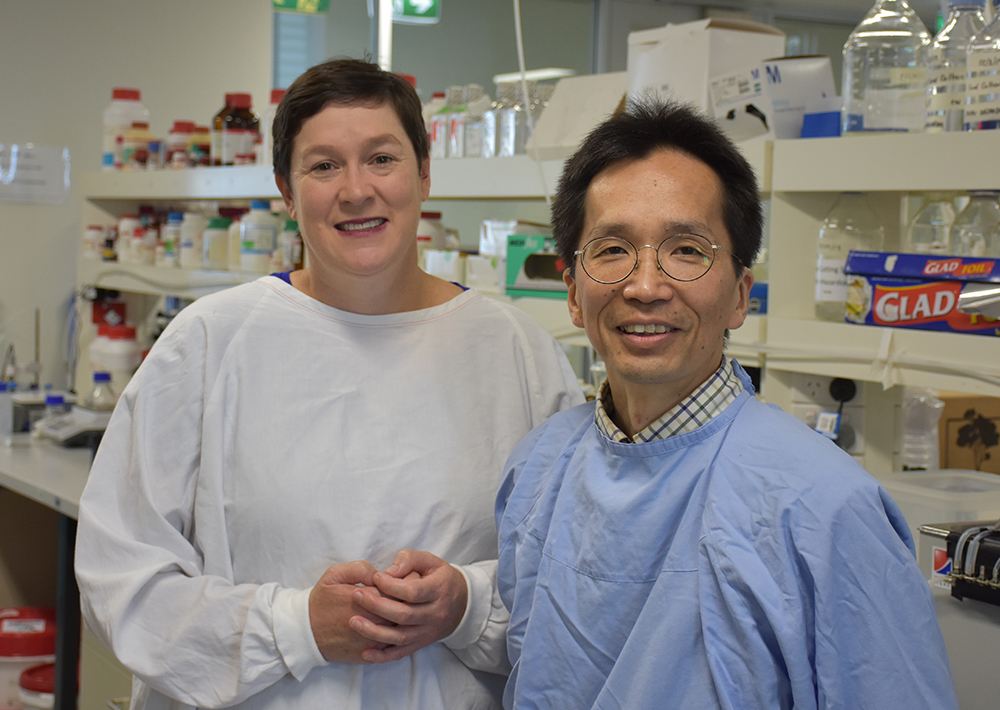 Researchers at the Kolling Institute have taken an important step towards the development of safer, non-addictive pain medications by increasing our understanding of spinal cord pain signalling.
Researchers at the Kolling Institute have taken an important step towards the development of safer, non-addictive pain medications by increasing our understanding of spinal cord pain signalling.
This valuable progress has been recognised internationally with publication in the Journal of Physiology, a leading scientific journal.
The findings follow the latest figures indicating more than 20 per cent of the population experience chronic pain, impacting their ability to work, care for families and generally function.
Dr Karin Aubrey said many people currently rely on opioids, like morphine and codeine, to reduce their pain.
“We know however, that these medications have serious side effects and in many cases offer only limited help,” she said.
“Our team, including senior researcher Dr Yo Otsu, is committed to advancing our understanding of how pain signals travel through the body, so that we can use this information to develop safe, new medications.
“This unique study used advanced techniques to unravel the spinal pain control circuit, and determine how opioids affect a key descending pain pathway. Interestingly, this pathway can enhance and reduce spinal signalling.
“Our spinal cords are an incredible information highway, responsible for relaying sensory, motor and pain information to the brain.
“The connections that make up the circuits of the spinal cord are all jumbled together and it’s difficult to unravel them and map how each connection contributes to controlling pain signals in the spinal cord.
“In this study, we’ve identified how a particular point in the spinal pain circuit is controlled by opioids, giving us a clearer picture of how a good pain medication might work.
“We currently have a reasonable understanding of the brain and pain circuits, but there is still so much more to discover.
“Each one of us has about 86 billion cells in our brains called neurons, which is approximately half the number of stars in the Milky Way. Essentially our heads are a small galaxy.
“This gives some context to the complexities of the brain and pain circuits, and the challenges involved in making significant scientific progress and advances in treatments.
“We are encouraged by the progress we’ve made and the deeper understanding we now have around the spinal cord pain signalling and potential targets for new therapies.
“Our findings have broadened our understanding of how the spinal cord pain circuit is organised and affected by opioids.”
This project was made possible with the support of the Ernest Heine Family Foundation and the Pain Foundation.